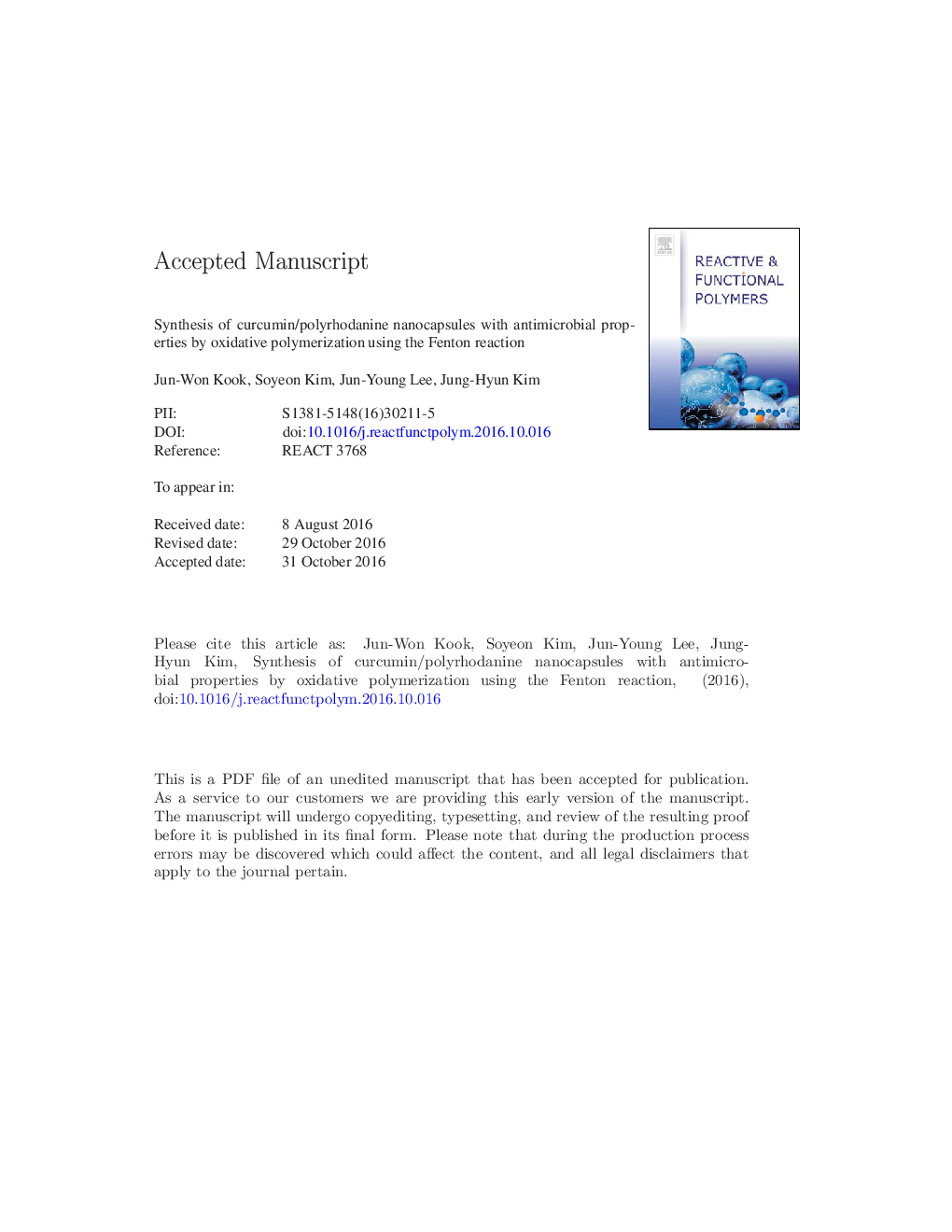| Article ID | Journal | Published Year | Pages | File Type |
|---|---|---|---|---|
| 5209452 | Reactive and Functional Polymers | 2016 | 35 Pages |
Abstract
Curcumin exhibits various biological activities; however, its applications are limited because of its poor water solubility. In this study, we describe an encapsulation process that improves this property using a polyrhodanine shell material synthesized by oxidative polymerization. Unlike the previous methods of oxidative polymerizations, we used the Fenton reaction to introduce a FeCl3/H2O2 combination system. By changing the rhodanine monomer ratio, the curcumin/polyrhodanine nanocapsule (CPR-NC) shell thickness could be controlled. The release behavior of curcumin was characterized by UV-Vis spectroscopy over time. Antimicrobial tests with curcumin, polyrhodanine, and CPR-NC were performed to analyze the minimum inhibitory concentration and inhibition zones.
Keywords
Related Topics
Physical Sciences and Engineering
Chemistry
Organic Chemistry
Authors
Jun-Won Kook, Soyeon Kim, Jun-Young Lee, Jung-Hyun Kim,
